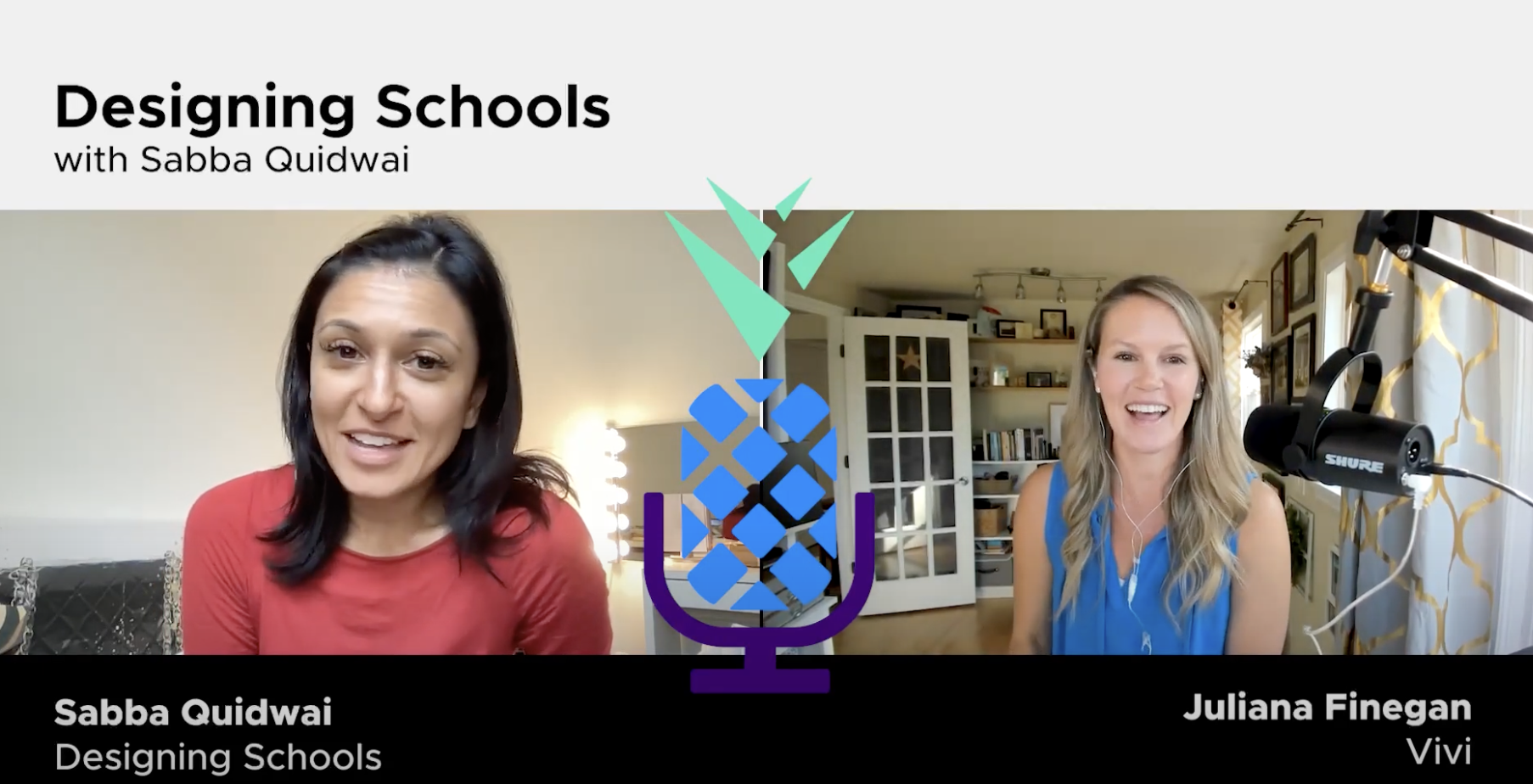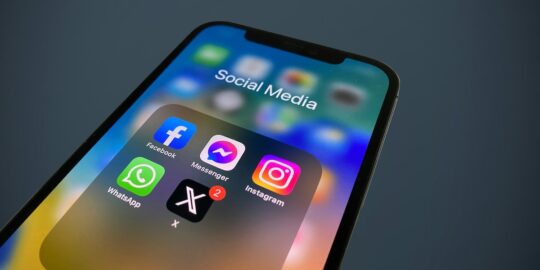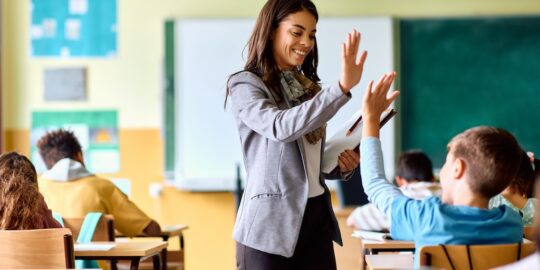
When Sabba Quidwai first started teaching, she was looking forward to sitting behind the desk for the next 30 years. But it was the height of the recession, in 2007, and fresh budget cuts meant she was out of the job within nine months.
In the beginning, the layoff felt like a low blow, but she quickly turned the experience into an opportunity. One that would ultimately change her trajectory from teaching social sciences to high schoolers to working with schools to integrate technology for consumer giant Apple, and finally to promoting design thinking to shape the next generation of learners.
As a young teacher, Quidwai had stumbled across the book “Lynchpin,” by business influencer Seth Godin. Between the pages, she found inspiration in his affirmation that the “world of work has changed,” and pushed individuals to define their strengths for themselves, and then learn how to showcase their value to the world. For Quidwai, it was a lightbulb moment.
“Once I realized that that’s what I could do, I was like ‘Okay, I’m really good at X, Y, Z, and I started pitching myself more in that context,” said Quidwai, adding that her early ability to leverage technology alongside her History and English lessons quickly became a sought-after skill. “It became a formula almost, and from there it just continued.”
As Quidwai bounced from school to school, she took account of the pressing need for schools to evolve classroom learning to meet the needs of students in today’s generation. That meant moving away from traditional education’s “passive, industrial, one-size-fits-all approach” to learning and embracing student-centered learning, technology, and shifting cultural ideals.
Now a researcher and educator, Quidwai points out that the ways students interact and the ways in which they seek out information and learning has changed, and should influence design thinking in schools. This concept is further explored in her documentary, which features Seth Godin, called “Designing Schools: A Documentary About What School Could Be.”
“I think as time goes on, the gap between the outside world that they experience and the school world that they experience, which in many ways are both equal parts of their day, is so drastically different,’ she said. “It’s gotta change, and we’ve got to move to something that is more relevant to help them contextualize and make meaning and navigate their own world.”
For example, the journey from high school to a four-year college to a 40-hour work week isn’t for everybody, and in some senses, is already fading away. While advancements in technology provide an opportunity to level the playing field, it will be up to systems and educators to develop strategies to create multimodal classrooms, bridge the equity divide, and guide the skills necessary for personalized, self-directed learning.
According to research conducted by Education Week, more than half of US school principals felt personalized learning either showed promise or was a transformational way to improve education.
In order to be successful in multimodal learning environments, it is critical that students build strong skills around self-directed learning, a process wherein individuals take primary charge of the planning, help-seeking, and evaluation of their learning experiences.
This concept moves students away from simply acquiring knowledge, i.e. memorization strategies, to developing knowledge, ultimately shifting the responsibility to learn from the teacher to the student.
With educational technology now firmly in play and the growing ways in which accessing and using information are ever-evolving, “the nature of knowledge and learning has changed and learning how to learn [has] gained ground,” according to an investigation of self-directed learning by İlkay Aşkin Tekkol and Melek Demirel.
For many learners, existing modalities of learning have often felt like a “one-size-fits-all” experience featuring the educator in the driving role as “sage on the stage.” Instead, giving students “voice and choice,” to allow them to make connections between learning and their daily lives, is more effective.
Strategies that get students actively engaged and set them up for continued participation in their learning — such as small groups, varied learning experiences, choice around activity, and brain breaks — are all starting points that can promote self-directed learning and engagement in the classroom.
Research clearly shows that in order to engage learners in remote, virtual, or hybrid learning, it is important to first support students in building a foundation for self-directed learning, and then leverage those skills to enable active engagement. From a design standpoint, research also shares that learners need to engage through technology and rigorous design that is active and mastery-based, with connection to others, as well as personal needs and goals.
Not all lessons need to contain all of these components all of the time, but it is good to think of these factors as ingredients that can be mixed in throughout a lesson in dynamic ways to ensure engagement and effectiveness.
Sparking innovation in the classroom
Over time, as Quidwai has promoted design thinking in classrooms, she has adopted a mantra to guide her evolving professional pursuits: “Innovation begins with empathy.”
That also includes building competencies for educators and offering strategic supports.
Most people understand that classrooms need to evolve, but they often get stuck turning theory into practice. Design thinking provides educators with the structure to scaffold those conversations and the encouragement to identify their strengths, so they can leverage impact into forward momentum.
As an Education Leadership Executive at Apple, Quidwai said she would often work alongside leadership teams focused on the future of learning, and worried that many of the executives failed to grasp the differences between their own personal learning experiences and those tuned in for today’s generation — and leaned on those experiences to dictate educational standards.
That’s not the way it should work, Quidwai said.
“In a learner-centered model, every single person is considered a learner, and we’re all learning from each other,” she added. “It’s really leaning into what makes people unique.
Preparing this generation’s students for the future requires student-teacher collaboration more than ever before, Quidwai said, an element often overlooked in designing schools today.
“It’s not just the teacher going to the student, it’s the student going to the teacher. It’s the neighbor, the care support staff, it’s everybody contributing in some way through that community. How do we move you from one competency to another, and help you grow as an individual based on your skills and strengths?”
It’s not an easy task, Quidawai said.
“I think if we keep expecting that one person in each area, especially a teacher, is going to do everything and be successful … it’s just a ridiculous assumption. It’s impossible,” she said. “Whereas, if you recognize that if we come together and collaborate, we’ll have more success. That mental and emotional burden that’s lifted is tremendous.”
Listen to the full episode of the “Educator Pineapple Podcast” featuring Sabba Quidwai, here.
| A new era of education is here. Want to learn more about how today’s educators are leveraging educational technology to design flexible, personalized learning experiences for all learners? Download the latest guide from Vivi: “Moving Away from the Front of Class.” Download |



